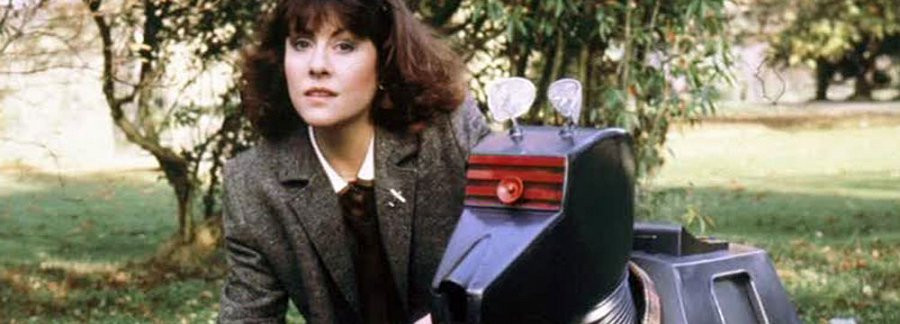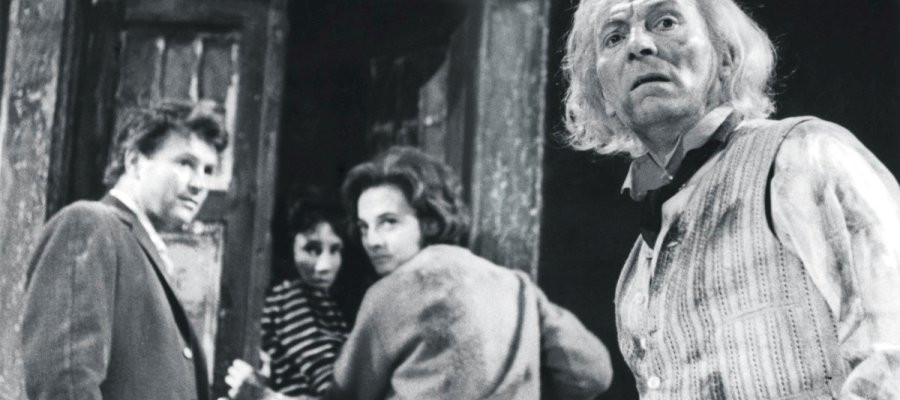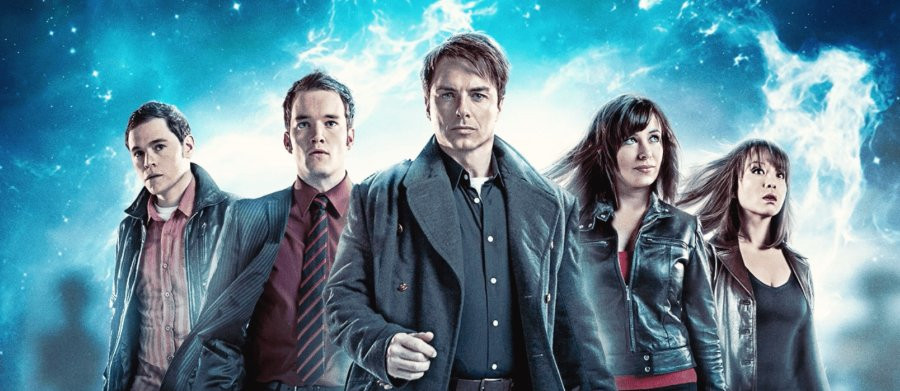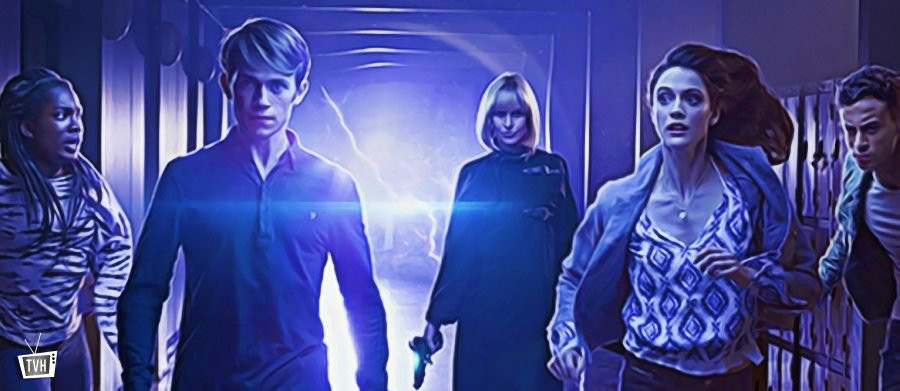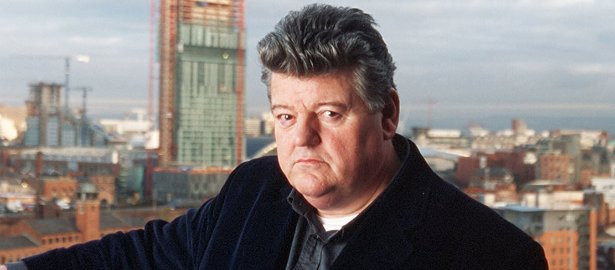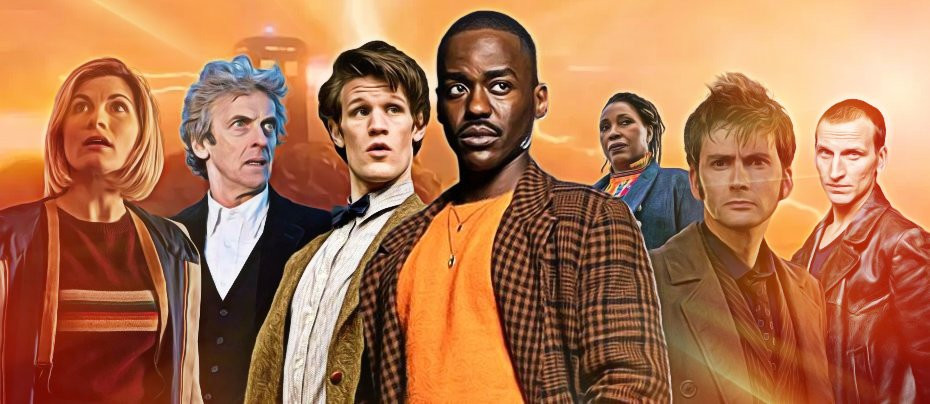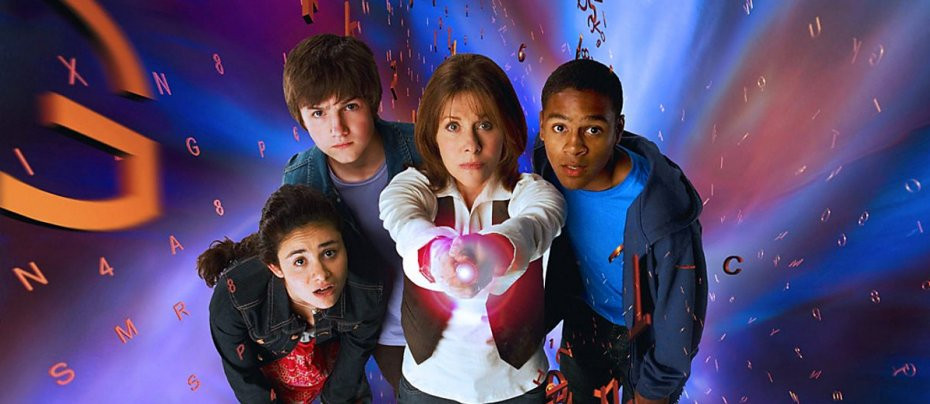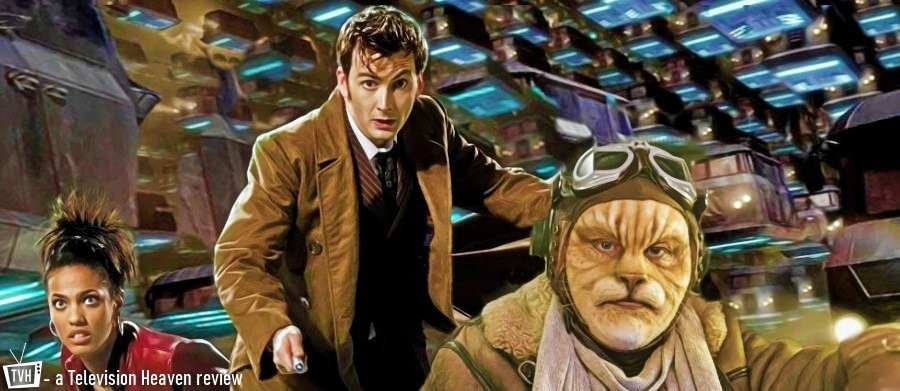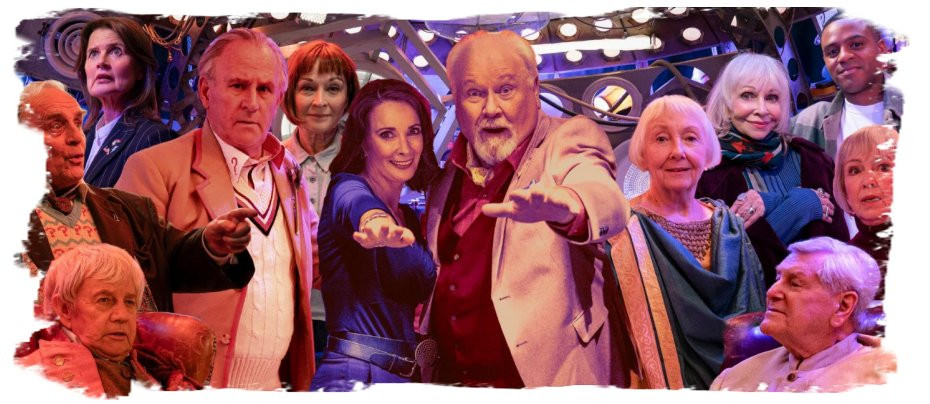Doctor Who meets Beverly Hills 90210

How to begin a series:
This article takes a new approach to established criticism and compares and contrasts the opening of the 2005 Doctor Who series ‘Rose’ with Beverly Hills 90210. Doctor Who is a long running series which has had lots of stops and starts and ‘Rose’ was the first regular series episode since 1989 and the first television episode since the one-off 1996 TV Movie starring Paul McGann. Work has previously been done on Doctor Who pilots, as we shall see further on.
The opening shots of ‘Rose’ do not mirror Beverly Hills 90210 but rather the start of the Doctor Who serial ‘Spearhead from Space’ (1970) with which Russell T Davies would definitely have been familiar. ‘Spearhead’ opens with a shot of space with a pan from right to left taking in the image of the Earth. There is then a shot of a tracking device followed by a man at controls and what appear, at first, to be meteorites come in to land. ‘Rose’, meanwhile, which concerns a similar threat from the Nestene Consciousness, likewise begins with a shot of space, a pan from left to right, in this case to Earth and, in this instance, a zoom down to the United Kingdom, to London and to Rose’s tower block. The opening of ‘Rose’ echoes ‘Spearhead’ more than ‘Remembrance of the Daleks’ (1988) which begins with a shot of Earth and pans out to reveal a spaceship.
Whether intended by Russell T Davies or not, the next shot of ‘Rose’ is similar to the start of Beverly Hills 90210. 90210 begins (1990) with the camera moving down past a tree to a shot of a house, whereas the later ‘Rose’ zoomed down on a planet but what is worthy of note is the pan from right to left of one of the main characters Brandon’s room to a shot of him in bed being woken by a strange alarm clock in the form of a face repeatedly saying ‘Wake up’. After the zoom down to the tower block, ‘Rose’, meanwhile, has the shot of an alarm clock reading 7:30 and Rose waking up, though here she, unlike Brandon, hastily gets up, a fast pace being important to new Who (see O’Day 2013). Alarm clocks are key to the opening of the film Back to the Future (1985) but there, high school student Marty McFly finds them in Doc Brown’s dwelling rather than being woken by them. Furthermore, an alarm clock continually wakes weatherman Phil Connors as he experiences the same day repeatedly in the movie Groundhog Day (1993) but that doesn’t open the film.
Beverly Hills 90210 proceeds to take things from Brandon and his sister Brenda’s perspective. The notion of newness accompanies the shot of Brandon in bed: he says ‘First day of school. Strange city. New house. No friends’. There is then a cut to Brenda trying out clothes, deciding what to wear. Not all the characters are seen for the first time from Brandon and Brenda’s perspective: for instance, Steve and Kelly are presented talking and it is clear that they were once a couple and David and Scott are freshmen’s new to the school. It isn’t until the second episode ‘The Green Room’ that Dylan McKay is introduced protecting Scott from some boys as witnessed however by Brandon and it is in the sixth episode ‘Higher Education’ that Brenda meets him and obviously fancies him.
Just as Beverly Hills 90210 opens with the perspective of Brandon and Brenda as newcomers, so too does ‘Rose’ up to the point when she meets the Doctor. For the viewer new to Doctor Who that has not met the Doctor before, Rose Tyler, the typical Earth girl, is the point of audience identification. After Rose is woken by her alarm clock, she kisses her mother Jackie Tyler on the forehead as she rushes out, and we are given a fast-paced montage of shots of her very ordinary day until it becomes strange and threatening as the format of the programme dictates. The London traffic is presented in fast motion, there are shots of Rose at work in the department store, then we see her eating lunch with her boyfriend Mickey Smith, and then we see the department store closing for the day. It is at this point that Rose is portrayed in peril in the basement of the store at the mercy of plastic dummies and just as one is about to strike her a hand grabs hers and we get our first glimpse of the new Doctor who says ‘Run’. While some other series open with characters meeting one another for the first time the parallels between ‘Rose’ and 90210 are striking because both open with an alarm clock waking characters.
However, while there are similarities between ‘Rose’ and 90210, Doctor Who is cast in different genres which come under the rubric of telefantasy. As David Butler points out, Rose’s first entrance to the TARDIS mirrors Barbara Wright’s in ‘An Unearthly Child’ (1963). The first episode begins with an uncertain tone with humming originating from a Police Box (24). And just as there is a close-up of Barbara’s face as she enters the TARDIS in that first episode rooting us in human response and estrangement (30-1), there is later a similar shot of Rose’s bewildered reaction upon seeing the inside of the TARDIS (40). This would be echoed in the second episode of New Who ‘The End of the World’ (2005) where for Rose’s first journey into the far future there is a shot of her excited face as she peers from the TARDIS (40). Butler contrasts the shots in ‘An Unearthly Child’ with those in the Paul McGann TV Movie (1996): Chang Lee’s riding in and out of the TARDIS has comic effect and the companion Grace Holloway does not seem overly amazed at seeing the inside of the TARDIS. The first shot of Grace entering the TARDIS dwarfs her with her initial reaction shown in long-shot (30). So while 90210 offered Brandon’s perspective following his being woken by an alarm clock, Doctor Who involved characters estranged in the world of telefantasy.
Russell T Davies has the habit of repeating things, however in his first era he does not begin another episode with the companion being woken by an alarm clock. Both episodes, ‘The Christmas Invasion’ (2005) and ‘The Runaway Bride’ (2006), do feature pre-credit sequences (unlike ‘Rose’) and do however commence with a pan from right to left of a shot of the Earth from space, followed by a rapid zoom down to the United Kingdom and to London. In ‘The Christmas Invasion’ Rose is already with the newly regenerated Doctor in the TARDIS so the first shot following the zoom down is of her mother Jackie Tyler preparing for Christmas. In ‘The Runaway Bride’ there is a shot of Donna Noble in the aisle of a church about to get married before she ends up being transported into the Doctor’s TARDIS as seen at the end of the previous episode ‘Doomsday’ (2006). So the comparison made here between Doctor Who and 90210 is limited to ‘Rose’.
This article has taken an entirely new approach, then, in comparing new Doctor Who with Beverly Hills 90210. The two programmes are very different: one is a British telefantasy series, while the other was an American prime-time series cast in the completely different genres of teen drama/soap opera. It is therefore highly surprising that the two should be examined side by side, even though there is no evidence that Russell T Davies had seen 90210 when planning Doctor Who. One would expect to see intratextual comparisons between new and classic Who such as when the Autons, cast as mannequins, burst out of shop windows, but not intertextuality between these very different series. These comparisons occur in first episodes as Doctor Who was back on our screens after a very long absence and such a novel approach is invaluable. It is quite conceivable that there are other television series and films prior to ‘Rose’ that began with a main character being woken up by an alarm clock but the comparison made here stands.
References
‘How to pilot a TARDIS: audiences, science fiction and the fantastic in Doctor Who’ by David Butler, in David Buter, ed., Time and Relative Dissertations in Space: critical perspectives on Doctor Who (Manchester: Manchester University Press, 2007, 19-42), ‘On Speed: The Ordering of Time and Pace of Action in Doctor Who’ by Andrew O’Day, in Matt Hills, ed., New Dimensions of Doctor Who: Adventures in Space, Time and Television (London: I.B. Tauris, 2013, 113-133).
I’d like to thank Professor Jonathan Bignell for commenting on a draft of this article and Tim Harris, Dr Matthew Kilburn, Adam Emanuel, Richard Harris, Simon Heritage and Joshua Nicholson for friendship and support and as always my muse Dr Anjili Babbar for inspiration. And to Zac with affection.


